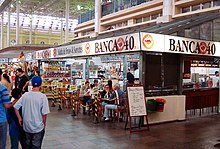General Info
Porto Alegre (Portuguese
pronunciation: [ˈpoɾtu aˈlɛɡɾi] ("happy port")) is the tenth most
populous municipality in Brazil, with 1,409,939 inhabitants, and the
centre of Brazil's fourth largest metropolitan area (3,979,561
inhabitants). It is also the capital city of the southernmost Brazilian
state of Rio Grande do Sul. The city is the southernmost capital city of
a Brazilian state. Porto Alegre is one of the most important cultural,
political and economic centers of Brazil. Two Mercosul countries,
Argentina and Uruguay, border on the State of Rio Grande do Sul.
Porto Alegre was founded in 1742 by immigrants from the Azores,
Portugal. In the late 19th century the city received many immigrants
from other parts of the world, particularly Germany, Italy, and Poland.
The vast majority of the population is of European descent.
The city lies on the eastern bank of the Rio Guaiba (Guaiba
Lake), where five rivers converge to form the Lagoa dos Patos (Lagoon of
the Ducks), a giant freshwater lagoon navigable by even the largest of
ships. This five-river junction has become an important alluvial port as
well as a chief industrial and commercial center of Brazil.
The port of Porto Alegre is important for transporting local produce.
The "Gaucho capital" has a broad-based economy that lays particular
emphasis on agriculture and industry. Agricultural production includes
products such as plums, peaches, rice and cassava grown on rural
smallholdings. The shoe and leather industries are also important,
especially in Novo Hamburgo, in the Metropolitan Region of Porto Alegre.
Porto Alegre has a long coastline on the Guaíba Lake, and its
topography is punctuated by 40 hills. In the lake, a vast body of water,
a maze of islands facing the city creates an archipelago where a unique
ecosystem gives shelter to abundant wildlife. The city area concentrates
28% of the native flora of Rio Grande do Sul, with 9,288 species. Among
these, there are many trees which are the vestiges of the Atlantic
Forest. Fauna are also diversified, specially in the islands and hills.
The Portoalegrense environs include many parks, squares and wooded
streets.
In recent years, Porto Alegre hosted the World Social Forum,
an initiative of several non-government organizations. The 9th Assembly
of the World Council of Churches was held in Porto Alegre in 2006.





